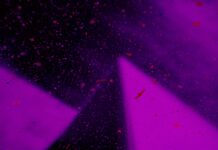PlantNet represents a groundbreaking innovation in the field of botany, harnessing the power of technology to revolutionize plant identification and species documentation. As a mobile application equipped with image recognition capabilities, PlantNet empowers users to identify plants with unprecedented accuracy and efficiency, facilitating biodiversity conservation, botanical research, and environmental education.
1. Introduction to PlantNet:
PlantNet is a mobile application developed by a consortium of researchers, botanists, and computer scientists with the aim of democratizing plant identification and promoting environmental awareness. Launched in 2013, PlantNet leverages image recognition technology and crowdsourced data to enable users to identify plant species simply by capturing photos of leaves, flowers, fruits, or other plant parts using their smartphones.
2. How PlantNet Works:
PlantNet operates on a simple premise: users capture photos of plants encountered in their environment and submit them to the application for identification. The app then analyzes the images using its database of botanical references and machine learning algorithms to match them with the closest botanical species. Users receive real-time feedback on the plant’s identity, along with additional information such as its scientific name, common name, habitat, and ecological significance.
3. Image Recognition Technology:
At the heart of PlantNet’s functionality lies its image recognition technology, which enables the app to analyze and classify plant images based on visual features such as leaf shape, flower morphology, and fruit characteristics. Machine learning algorithms continuously learn from user inputs and refine their recognition capabilities over time, enhancing the app’s accuracy and reliability in identifying diverse plant species.
4. Database and Collaborative Efforts:
PlantNet relies on a vast database of botanical references compiled from botanical collections, herbarium specimens, and scientific literature. Additionally, the app benefits from the contributions of a global community of users who submit plant observations and help expand the database’s coverage of plant species and geographic regions. This collaborative approach ensures the app’s relevance and utility across diverse ecosystems and geographical contexts.
5. Applications in Biodiversity Conservation:
PlantNet plays a crucial role in biodiversity conservation by empowering users to identify and document plant species in their natural habitats. By facilitating rapid species identification and data collection, the app enables citizen scientists, researchers, and conservationists to monitor plant diversity, track invasive species, and assess the impact of environmental changes on ecosystems. This information is invaluable for informing conservation strategies and protecting vulnerable plant populations.
6. Botanical Research and Education:
In addition to its conservation applications, PlantNet serves as a valuable tool for botanical research and education. Researchers can use the app to collect data on plant distributions, phenology, and ecological associations, contributing to our understanding of plant ecology and evolution. Moreover, PlantNet enhances environmental education by engaging users in hands-on learning experiences and fostering a deeper appreciation for the natural world.
7. Geographic Reach and User Engagement:
PlantNet has garnered widespread popularity and user engagement, with millions of downloads and contributions from users around the world. The app’s availability across multiple platforms and languages, coupled with its intuitive interface and real-time feedback, make it accessible to users of all ages and backgrounds. PlantNet’s global reach facilitates cross-cultural exchanges and collaborative efforts to document plant diversity on a global scale.
8. Future Developments and Expansion:
Looking ahead, PlantNet continues to evolve and expand its capabilities to meet the growing demand for plant identification and conservation tools. Future developments may include enhancements to image recognition algorithms, integration with additional data sources such as remote sensing data and genetic databases, and collaborations with botanical gardens and research institutions to enrich the app’s botanical knowledge base. As PlantNet continues to empower users and advance botanical science, its impact on plant conservation and environmental stewardship is poised to grow exponentially.
9. User Feedback and Continuous Improvement:
User feedback plays a pivotal role in shaping the evolution of PlantNet, driving continuous improvement and refinement of its functionality. The app’s developers actively solicit input from users, soliciting suggestions for enhancements, identifying areas for improvement, and addressing technical issues. This iterative process of feedback and adaptation ensures that PlantNet remains responsive to user needs and delivers a seamless and intuitive user experience.
10. Integration with Conservation Efforts:
PlantNet’s potential extends beyond individual plant identification to broader conservation efforts aimed at protecting biodiversity and preserving natural ecosystems. The app can be integrated into conservation initiatives, citizen science projects, and environmental monitoring programs to gather data on plant distributions, assess habitat quality, and identify areas of conservation priority. By leveraging PlantNet’s image recognition technology and user engagement, conservationists can mobilize a global network of volunteers to contribute to biodiversity conservation efforts worldwide.
PlantNet represents a powerful tool for plant identification, biodiversity conservation, and environmental education. By harnessing the collective power of technology, community engagement, and scientific expertise, PlantNet empowers users to explore the natural world, contribute to scientific research, and take meaningful action to protect our planet’s precious biodiversity. As PlantNet continues to evolve and expand its reach, its impact on plant conservation and environmental stewardship will only continue to grow, ushering in a brighter and more sustainable future for generations to come.
Continuing on the exploration of PlantNet, it’s essential to highlight the app’s reliance on user feedback for continuous improvement and its potential integration with conservation efforts. User feedback serves as a crucial driver of PlantNet’s evolution, guiding developers in refining its functionality, addressing technical issues, and enhancing the user experience. This iterative process ensures that PlantNet remains responsive to the needs of its diverse user base, delivering accurate and reliable plant identification results while maintaining a user-friendly interface.
Furthermore, PlantNet’s integration with conservation initiatives amplifies its impact beyond individual plant identification, contributing to broader efforts aimed at biodiversity conservation and ecosystem preservation. Conservationists can leverage PlantNet’s image recognition technology and user engagement to gather data on plant distributions, monitor changes in habitat quality, and identify areas of conservation concern. By mobilizing a global network of volunteers through citizen science projects and environmental monitoring programs, PlantNet facilitates collaborative efforts to safeguard our planet’s biodiversity and address pressing conservation challenges.
In conclusion, PlantNet stands as a powerful tool at the intersection of technology, community engagement, and environmental stewardship. By empowering users to explore and understand the natural world, contribute to scientific research, and participate in conservation efforts, PlantNet catalyzes positive change in plant conservation and ecosystem management. As PlantNet continues to evolve and expand its reach, its potential to drive meaningful impact in biodiversity conservation and environmental education remains unparalleled, offering hope for a more sustainable future for our planet.


















